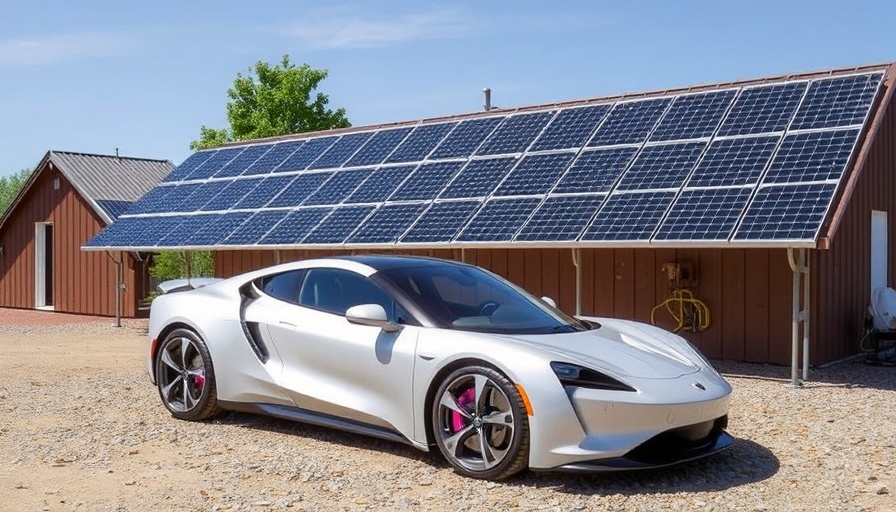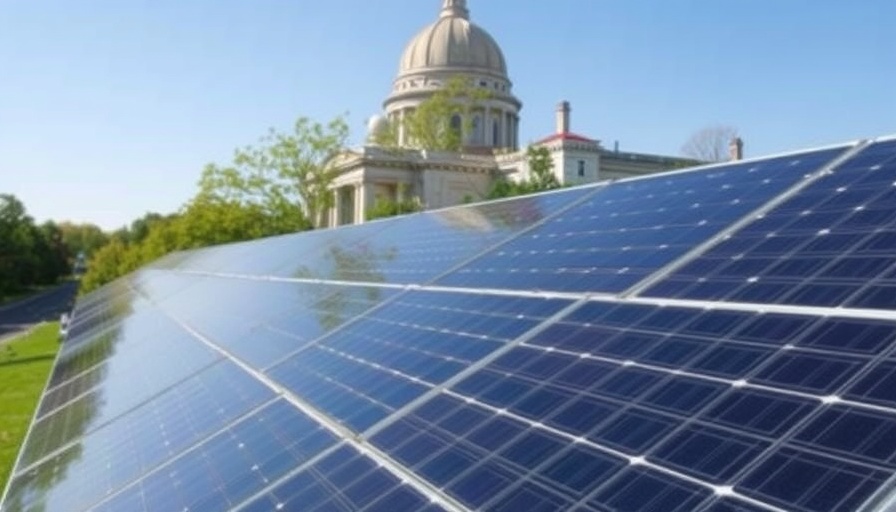
Driving Towards Energy Independence: Powering EVs with Solar Energy
As homeowners increasingly seek sustainable solutions to lower energy costs and boost home value, the merging of solar power and electric vehicles (EVs) has emerged as a transformative trend. Not only does this gas-free approach to transportation significantly reduce carbon footprints, but it promises to enhance our drive towards energy independence. Harnessing solar energy not only powers electrifying vehicles like the Mach-E and EV9 but also supports households in achieving self-sufficiency in energy consumption.
The Financial Upsides of Solar-Powered EVs
Investing in solar technology is becoming increasingly appealing. According to data from the Department of Energy, switching to solar-powered EV charging can slash charging costs by up to 40%. Homeowners who fully commit to harnessing the sun's energy can save hundreds of dollars annually, especially if their solar panels are paid off. With federal incentives providing up to 30% off the installation costs and possible state initiatives, the initial investment can lead to substantial long-term savings.
Integrating Solar Tech: How It Works
Powering your electric vehicle with solar energy offers multiple routes to explore. One popular method involves installing rooftop solar systems that feed electricity directly into your home, which then powers your EV. Alternatively, community solar programs allow participants to utilize shared solar arrays, further expanding options for urban residents who may not have roof access. Additionally, newer models are increasingly coming equipped with built-in solar panels, providing supplementary battery charging capabilities during the day.
Environmental Benefits: A Cleaner Tomorrow
The synergy between solar panels and electric vehicles goes beyond just cost savings—it leads to a tangible decrease in greenhouse gas emissions. EVs charged with solar energy have a lower carbon footprint compared to traditional gas-powered vehicles. As solutions for energy storage evolve, the possibility of using EV batteries as backup systems during outages enhances resilience during emergencies. This aligns perfectly with the growing emphasis on sustainability and environmental health.
Real-World Impact: Community and Grid Benefits
By charging EVs with solar power, owners can benefit the local electrical grid as well. During peak solar generation hours, using solar power can mitigate grid demand, thus preventing strain on utilities. This practice can help local jurisdictions manage usage more effectively and promote a balanced energy landscape. Such community-driven projects encourage collective contributions toward a cleaner future.
Challenges to Consider: From Initial Costs to Ecosystem Compatibility
Despite the myriad benefits, potential adopters should remain aware of some challenges. The upfront costs of installing solar solutions can be significant, often requiring financial planning and possible financing options. Additionally, those living in regions with limited sunlight may struggle to generate sufficient solar energy, especially during winter months. However, integrating energy management systems, which optimize the use of solar power while balancing household needs, can distribute the energy resources more effectively.
Future Trends: Where Solar and EV Technologies Are Headed
The evolution of solar technologies is aligning seamlessly with advancements in electric vehicles. First, vehicle-integrated photovoltaics are being developed that may substantially increase the range of electric vehicles, allowing for more sustainable driving habits. Furthermore, as solar technology becomes more efficient and cost-effective, the adoption rates among homeowners are likely to skyrocket. We might even see entire neighborhoods powered by community-supported solar arrays, optimizing local energy consumption and transmission.
Taking the Leap: Key Steps for Homeowners
For those interested in diving into the solar-powered EV revolution, the first step is assessing home energy consumption and understanding the local solar incentive programs available. Consulting with a qualified solar installer can provide personalized recommendations and help estimate the initial investment to meet specific needs.
Ultimately, the synergy between EV technology and solar energy highlights a promising trajectory towards a cleaner, self-sufficient future. As communities rally behind these sustainable initiatives, the dream of energy independence inches closer to reality.
Ready to embrace a more sustainable lifestyle with solar power and EVs? Equip your home with solar technology that can conserve energy costs and help secure our shared future—start exploring your options today!
 Add Row
Add Row  Add
Add 



 Add Row
Add Row  Add
Add 
Write A Comment